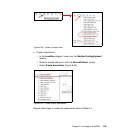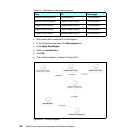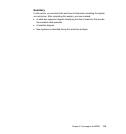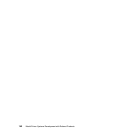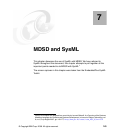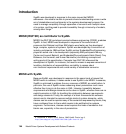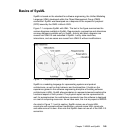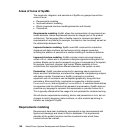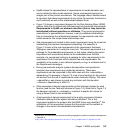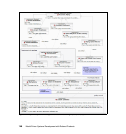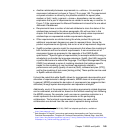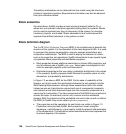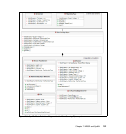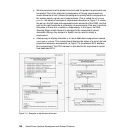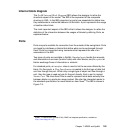146 Model Driven Systems Development with Rational Products
Areas of focus of SysML
The constructs, diagrams, and semantics of SysML are grouped around four
areas of focus:
Requirements modeling
Improved behavior modeling
Blocks (improved structure modeling/semantics with blocks)
Parametrics
Requirements modeling: SysML allows the representation of requirements as
model elements. Hence requirements become an integral part of the product
architecture. The language offers a flexible means to represent text-based
requirements of any nature (for example, functional or non-functional) as well as
the relationships between them.
Improved behavior modeling: SysML uses UML constructs for interaction
diagrams and state machines and enhances activity diagram semantics,
including the addition of semantics to enable modeling of continuous behavior.
Improved structure modeling: SysML provides a basic structural element
called a
Block, whose aim is to provide a discipline-agnostic building block for
systems. Blocks can be used to represent any type of components of the system,
for example, functional, physical, and human. Blocks assemble to form
architectures that represent how different elements in the system co-exist.
Parametrics: SysML provides semantics for reasoning about properties of
blocks and their relationships, and allows the integration of engineering analysis
with design models. Parametrics in SysML are based on constraint
equations--sets of constraints can be depicted graphically, along with their
parameters. More specifically, constraints are properties in blocks named
ConstraintProperty and are typed by ConstaintBlocks. A constraint block defines
an expression and the attributes that represent its parameters. SysML does not
prescribe any language to represent the expressions or provide a solver for it.
This is typically offered within the usage of a tool optimized for constraint solving.
We will discuss requirements modeling, blocks, and parametrics in turn, but not
changes to activity diagrams, state machines, or other material pertaining to
behavior as changed in SysML.
Requirements modeling
Requirements have been traditionally represented as text (accompanied with
figures and drawings) and stored in files or databases. The requirements
describe all the product functions and the constraints under which these
functions should be realized:




